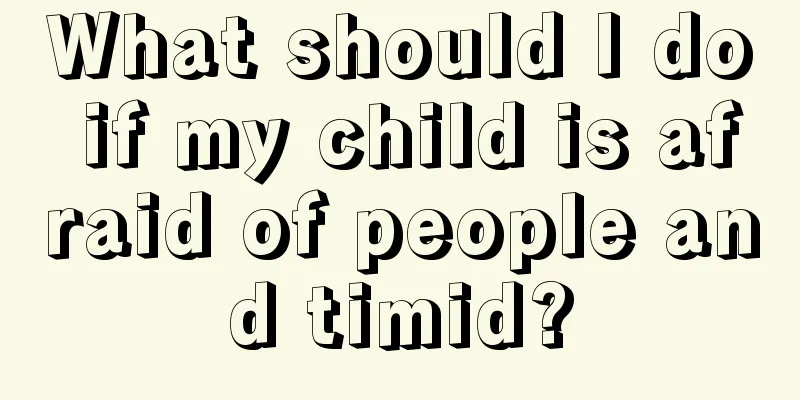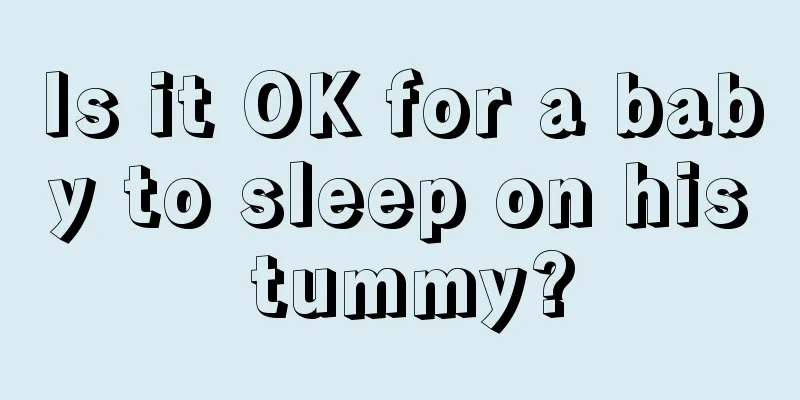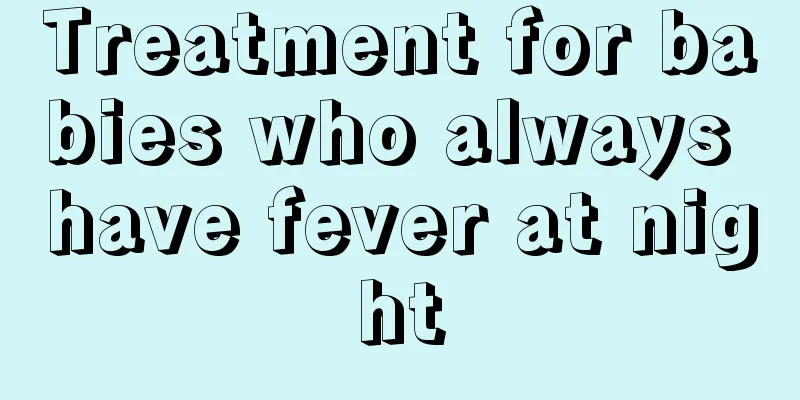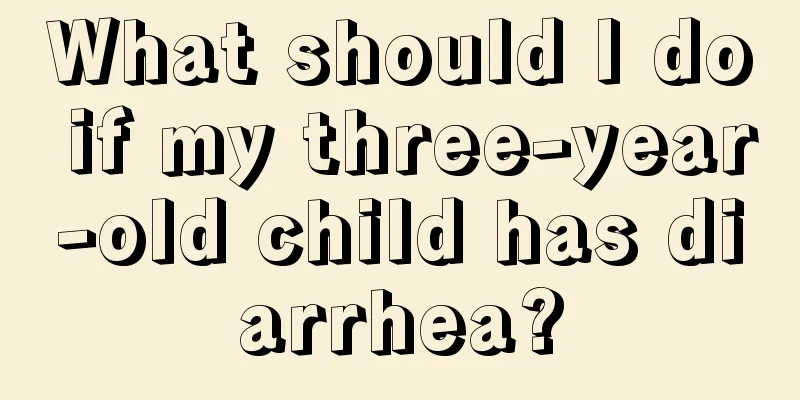Why do children have cold hands and feet after their fever subsides?
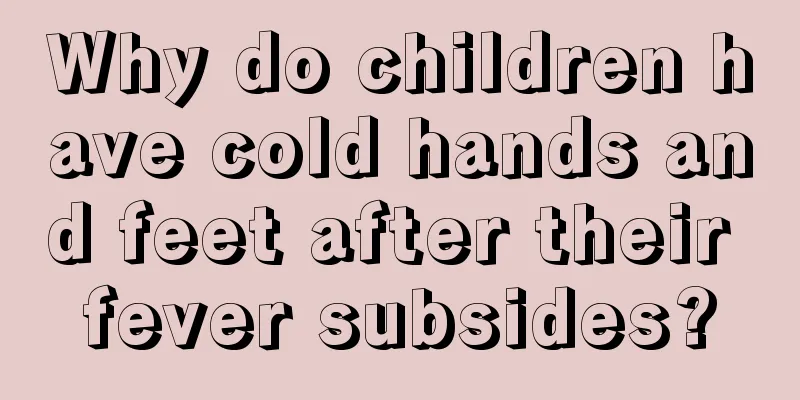
|
Children are more susceptible to virus invasion and thus develop certain diseases because of their relatively low body resistance. Fever among children is a relatively common disease. When this disease occurs, parents will of course take timely measures to reduce the child's fever. However, when the child's fever subsides, his hands and feet become cold. Many parents are very worried. So why do children's hands and feet become cold after the fever subsides? If your baby only has cold hands and feet but no other abnormal symptoms, don't worry. This phenomenon often occurs because the baby's autonomic nervous system is not fully developed. It is generally normal. As long as the tip of the nose is hot, it is not cold. If it is a boy, you can observe his testicles. If they are relaxed, he is not cold, otherwise he is cold. For a girl, you can touch the back of her head. If it is hot, she is not cold, otherwise she is cold. The phenomenon of babies having fever and cold hands and feet is often seen clinically. The child has a high fever but cold hands and feet. After the body temperature gradually drops, the hands and feet slowly become warm again. In fact, this is a phenomenon of false cold and real heat. Although the child's hands and feet are cold, his internal organs are in a feverish state. This is especially common in infants under 3 years old. Children's limbs contain less blood than their internal organs, and the blood supply to their limbs is insufficient, so they are more likely to feel cold than adults. In addition, the development of children's nervous system is not yet complete, and the autonomic nervous system responsible for managing vasodilation and contraction is prone to disorder, resulting in the small blood vessels at the ends of the limbs being in a spasmodic contraction state and becoming cold when high fever first occurs. So, what should I do if my baby has a fever and cold hands and feet? Children with a cold usually only need oral medication when the temperature is above 39 degrees. If the temperature is below 39 degrees, physical therapy is usually sufficient. Because the human body has its own immune regulation, body temperature will rise when fighting bacteria and viruses. Pay attention to your body temperature at night, because the human body's immunity is particularly low at night, so it is easy to have a fever, while the temperature drops during the day. The situation of babies having fever but cold hands and feet is often seen in clinical practice. The child has a high fever but cold hands and feet. After the body temperature gradually drops, the hands and feet slowly become warm again. In fact, this is a phenomenon of false cold and true heat. Although the child's hands and feet are cold, his internal organs are in a hot state. This is especially common in infants under 3 years old. This phenomenon of false cold and real heat is mainly because babies (especially infants and young children) have less blood in their limbs than in their internal organs. Due to insufficient blood supply to their limbs, they are more likely to feel cold than adults. In addition, the baby's nervous system is not yet fully developed, and the autonomic nerves responsible for managing vasodilation and contraction are prone to disorder, causing the small blood vessels at the ends of the limbs to be in a spasmodic contraction state and become cold when the high fever first occurs. Many parents do not understand this situation. Once they find their baby's limbs are cold, they mistakenly think that the baby has caught a cold and is afraid of the cold, so they immediately wrap the baby tightly. As a result, the baby's body temperature cannot be dissipated in time and keeps rising, and even high fever and convulsions occur. If the body temperature exceeds 38.5 degrees, do not reduce the fever too quickly when the child has a fever. Many parents are eager to reduce their children's fever because they are worried that the fever will damage their children's brains and affect their intelligence. In fact, a simple fever will not affect the intellectual development of children. If the baby has other discomforts, it is recommended to see a doctor to see if there is any inflammation or something, and it would be better to prescribe some medicine for the baby to take. How to reduce baby's fever correctly 1. Use antipyretics correctly. If the child's body temperature does not exceed 38.5 degrees, antipyretic drugs are generally not needed, but changes in body temperature should be closely monitored. If the child's body temperature reaches 39 degrees, in order to prevent heat cramps, under the guidance of a doctor, choose appropriate antipyretics, or use physical cooling, such as using 75% alcohol or warm water to wipe the armpits, groin, palms, soles of the feet and other areas with rich blood flow, which can also help reduce fever, and the effect is very good, and children are willing to accept it. But you must be careful to keep the child covered at all times while wiping to prevent him from catching cold. 2. When having a fever, you should take off your clothes and should not try to cover up the sweat to lower the body temperature, because excessive sweat loss will make the child feel tired and weak. Traditional Chinese medicine believes that the loss of a large amount of body fluid is actually beneficial to the child's recovery. 3. Keep the indoor air fresh, open windows regularly for ventilation, and keep the room temperature not too high, preferably between 18 and 20 OC. At the same time, do not let drafts blow directly on the child. 4. If the child's fever still persists, he or she should cooperate with the doctor and undergo other examinations to help find the cause of the disease as soon as possible and provide targeted symptomatic treatment. |
>>: Why does my child’s feet hurt in the middle of the night?
Recommend
What are the things to prepare for the first birthday celebration?
When there is a baby in the family, every stage o...
Can children go to the plateau?
The altitude of the plateau is generally quite hi...
What are the symptoms of febrile seizures in children?
Febrile convulsions are a disease that mainly occ...
Neonatal subcutaneous hematoma
I believe most people know that newborns are very...
How often do newborns poop?
Everyone hopes that their baby can grow up health...
What to do if your baby has swollen eyes and eye mucus
Every baby is a mother’s angel, and the baby’s he...
Reasons for baby's night sweats while sleeping
Many mothers will touch their babies' heads w...
Treatment of a two-year-old baby with a fever of 38 degrees
As soon as the baby has a fever, the mother will ...
What are the symptoms of enlarged tonsils in children?
Young children's immunity is relatively imper...
The reason why the baby's nose is exposed
In today's life, the birth of a baby is a gre...
Baby food for seven months
I believe that most of you are not familiar with ...
3 tips to make your baby no longer afraid of taking a bath
Taking a bath is like a living torture for many c...
My baby farts a lot without pooping for a day
Many mothers will be particularly careful when fe...
Why does my child's farts smell so bad?
Whether a child's farts are normal or not als...
What to do if your voice becomes hoarse during the voice change period
Adolescence is the best period of growth for chil...

